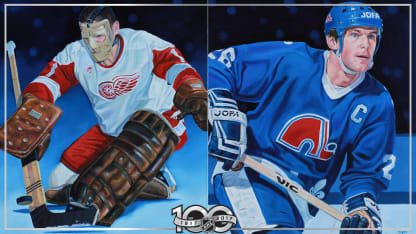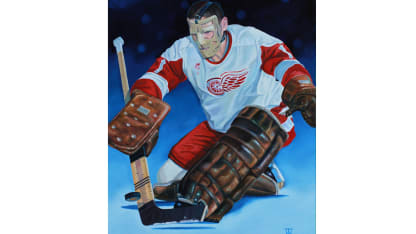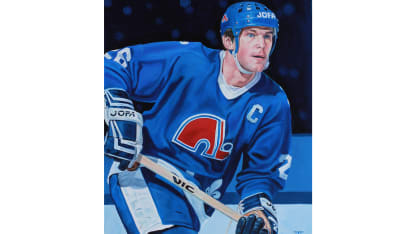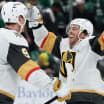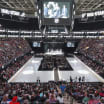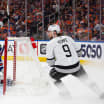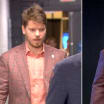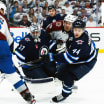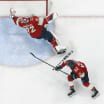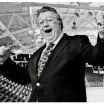'He was always worried about how he would take care of his family when he was done playing,' Pronovost said. 'He worried about whether he would be able to give them all he could.'"
Painting Sawchuk was especially gratifying for artist Tony Harris.
"This painting was particularly satisfying," he said, "because it combined two of my favorite things to paint: Goalies, who I've been drawing since grade 3, and Original Six uniforms."
Like Sawchuk, Peter Stastny was a success from the moment he stepped onto the ice in the NHL. But to get that far took a tremendous act of courage.
Stastny and younger brother Anton were two of Czechoslovakia's top stars. But while at a European club tournament in Innsbruck, Austria, during the summer of 1980, he made a long-distance call to Quebec Nordiques president Marcel Aubut, informing him that the two would be willing to defect and sign with Quebec as a package deal. After the tournament ended, the Stastnys were missing when the players got on the team bus; they were already in a rental car with Aubut, heading for Vienna and eventually to Quebec.
The Stastnys became non-persons in their homeland but excelled in the NHL. In 1980-81, Peter set NHL rookie records for assists (70, matched by Joe Juneau of the Boston Bruins in 1992-93) and points (109; surpassed by Teemu Selanne in 1992-93). He won the Calder Trophy as the NHL's top rookie and went on to become the second-highest scorer of the 1980s with 1,059 points, trailing only Wayne Gretzky. He is also one of seven players in NHL history with six consecutive 100-point seasons.
But more important was the fact that by the mid-1980s, veteran Czech players were allowed to play in the NHL; by the early 1990s, players from the Soviet Union would follow. All owed a debt of gratitude to Stastny.
Author Bob Duff, in his NHL100 profile of Stastny, wrote that after being traded to the New Jersey Devils in 1990, Stastny became teammates with two longtime Soviet stars, defensemen Viacheslav Fetisov and Alexei Kasatonov:
"'You'd look around that dressing room and see some of the best players in the game,' Stastny said. "'Players like Fetisov, Kasatonov, they were superstars in their own country. You always knew if they were given the chance to come here, they would excel."
'Stastny proved an enormous help. Fluent in Czech, Slovak, Russian, English, German and French, he was the club's unofficial go-between.
'"If I could help out in any way, I was happy to do it,' he said. 'I remembered what it was like. I was in their shoes.
"It's tough, it really is. I remember in Quebec, we had the goalie [Sergei] Mylnikov. He was our only Russian. They sent along an official interpreter, but on hockey-related topics, he had no idea.
'"I would talk hockey with Sergei. I think there was a special bond between us. He was very thankful, very grateful for the time I spent with him and that made me feel good.'"
